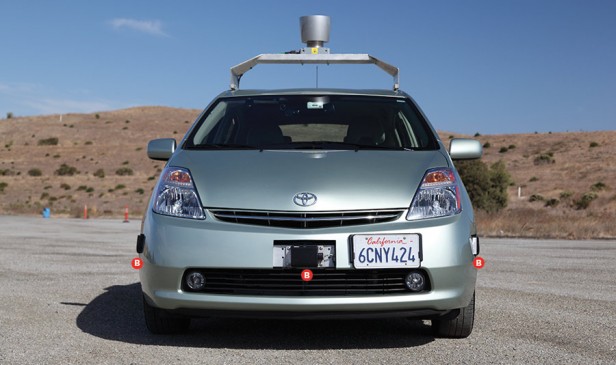Intelligent Machines
Look, No Hands
Google’s self-driving car.
by Erica Naone
Apr 19, 2011

A. LIDAR Laser
Mounted on top of the car is a light detection and ranging (LIDAR) laser, a technology commonly used in police speed-detection guns. Like any other LIDAR system, it determines the distance and position of surrounding objects by sending out laser pulses and measuring how long it takes for the light to bounce back. On the Google cars, the device makes about 10 rotations per second, gathering data about objects within a circle of roughly 70 meters.
B. Radar
Three radar sensors in the front part of the car, and one behind, also help detect nearby objects and determine how close they are.
C. Position Sensors
A sensor on the left rear wheel detects small movements. This data, when combined with information from a GPS system and internal gyroscopes, helps the self-driving car calculate which direction it is facing.

Three radar sensors in the front part of the car, and one behind, also help detect nearby objects and determine how close they are.

A laptop computer inside the car gathers data from the sensors and controls the vehicle through its own onboard computer systems. This makes the steering wheel appear to turn on its own. Data from each driving session is transferred to Google servers for analysis, which is helpful in fixing bugs.
E. Video Camera
A video camera placed near the rearview mirror detects important visual cues such as changing traffic lights.
F. Manual Control
The red button instantly restores manual control of the car if the standby driver deems it necessary. A person can also grab control by turning the steering wheel slightly or tapping the brake.
Author
From our advertisers
- In association with IntelGetting smart about the future of AI
- Autonomous driving: Safety first
- Produced in association with IBMOptimizing the engineering life cycle requires digital transformation